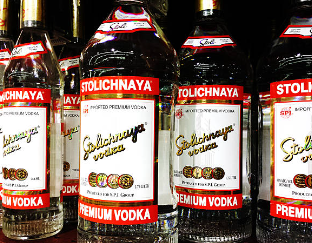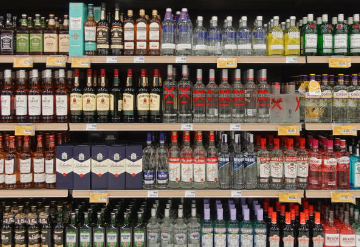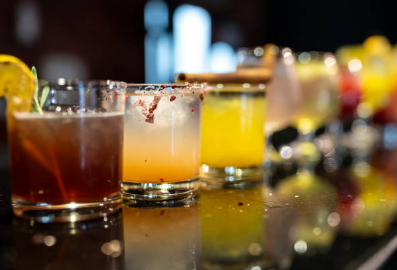Input
Changed
A Severe Decline for Spirits Brands A Wider Trend: Distilleries Across the U.S. Are Struggling Factors Behind the Decline

A Severe Decline for Spirits Brands
In recent years, the alcohol industry has been reeling under the combined weight of supply chain disruptions, changing consumer habits, and the lasting impact of the COVID-19 pandemic. While some segments of the alcohol industry have managed to recover and even thrive, others have struggled to regain their footing. A prime example of this struggle comes from a popular whiskey brand that has now filed for Chapter 11 bankruptcy protection, signaling a growing issue among many alcoholic beverage companies.
The alcoholic beverage market has not been immune to the harsh economic realities of recent times. Whiskey, vodka, and other spirits brands have faced a dramatic decline in sales, especially during the peak of the pandemic. Bars, restaurants, and events that typically provided a steady stream of demand for premium spirits were shuttered or restricted, leaving distilleries and producers scrambling to adjust. For many, this adjustment has been insufficient. Companies that had once enjoyed strong sales are now struggling to survive.
The filing for Chapter 11 bankruptcy protection by this iconic whiskey brand is just the latest in a series of similar events across the alcoholic beverage industry. What once seemed like a temporary setback during the pandemic has now become a prolonged issue, as these companies continue to wrestle with deeper financial troubles. While other alcohol categories like beer and wine have rebounded, the spirits market is facing a tougher challenge, particularly for mid-market and premium brands that relied heavily on in-person consumption.
The pandemic’s initial blow to the alcohol industry was swift and severe. When the world went into lockdown, the immediate closure of restaurants, bars, and event venues caused a significant drop in on-premise alcohol sales. For many spirits companies, including whiskey brands, this was a blow they were not prepared for. Sales plummeted as consumer behavior shifted from enjoying cocktails at bars to purchasing cheaper, store-bought alternatives.
However, unlike beer and wine, which found new markets through grocery and convenience store purchases, spirits brands struggled to adjust quickly enough. Whiskey brands that once relied on bars and restaurants as key sources of income saw their profit margins shrink as they pivoted to home delivery and retail sales. Even though many of these brands tried to innovate, launching new products or adjusting their marketing strategies, the recovery was slower than anticipated.
What makes the situation worse for this particular whiskey brand is that recovery has not occurred as many had hoped. For some companies, the pandemic served as a temporary blip—an interruption to an otherwise steady business model. But for others, including this whiskey company, the difficulties have only compounded over time. Financial issues that were once manageable during the initial waves of the pandemic have now evolved into insurmountable problems, prompting the decision to file for bankruptcy protection.

A Wider Trend: Distilleries Across the U.S. Are Struggling
This issue is not unique to just one whiskey brand. Across the United States, numerous distilleries and alcohol brands are encountering similar problems. From Colorado to Montana, states once known for their thriving distilleries are now seeing a decrease in their number of operating distilleries. Small to mid-sized companies in these regions have been hit particularly hard, with many being forced to file for bankruptcy as the realities of rising production costs, shrinking consumer demand, and supply chain disruptions weigh heavily on their bottom lines.
Several distilleries in states like Colorado have shut down or merged with larger producers in an attempt to stay afloat. Despite the rise of craft distilleries and a surge in local alcohol consumption during the pandemic, these small operations have found it difficult to compete with larger, more established brands that have greater resources and distribution networks. The shift in consumer preferences toward higher-end, artisanal products has not been enough to sustain these businesses in the long term, especially as supply chain issues continue to exacerbate production challenges.
The situation in Montana is similarly bleak. The state, once a hub for craft distilleries, has seen several iconic brands struggle to keep their doors open. Some have filed for bankruptcy protection, while others have been forced to downsize or liquidate assets in order to cover mounting debts. The challenges faced by distilleries in these states highlight a larger trend within the spirits industry: companies are grappling with a volatile market that is difficult to predict and even harder to navigate.

Factors Behind the Decline
There are several factors contributing to the financial decline of whiskey and other spirits brands. First, the rising cost of raw materials—such as grains and glass bottles—has made it more expensive to produce alcohol, putting further strain on profit margins. Second, labor shortages in distilleries and across supply chains have created delays in production and distribution, leaving many brands unable to meet demand in key markets. Finally, the shift in consumer behavior, with younger generations preferring cocktails, beer, or non-alcoholic beverages over traditional spirits, has meant that many whiskey brands are no longer as relevant to the changing tastes of the public.
Another factor is the overall increase in competition. New players entering the alcohol space, particularly in the craft beverage sector, have made it harder for established brands to maintain their market share. These newer brands often offer unique flavors and stories, capturing the attention of younger consumers who seek novelty and authenticity in their purchases.
Moreover, larger corporations that control a significant portion of the alcohol market have also made it difficult for smaller brands to survive. As these major corporations continue to consolidate their control over the market, small to mid-sized whiskey brands find it more challenging to distribute their products at competitive prices.
For those whiskey brands and distilleries that have filed for bankruptcy or are considering it, the road ahead is uncertain. Chapter 11 bankruptcy provides a path for companies to reorganize and restructure their debts in an attempt to regain financial stability. For some, it can offer the breathing room necessary to refocus their efforts on more sustainable business models. However, this is not always a guarantee of success. Some companies that file for Chapter 11 never emerge from the process, as the underlying issues remain unresolved.
The future of these distilleries and spirits brands hinges on their ability to adapt to an ever-changing market. For some, the answer may lie in diversification—offering new product lines, exploring new distribution channels, or even collaborating with other producers to reach wider audiences. For others, it may require a shift in marketing strategy, refocusing efforts on consumers who still have a strong preference for whiskey and other spirits.
Ultimately, this moment of crisis for many popular alcohol brands serves as a reminder of the unpredictable nature of the spirits industry. The combined challenges of the pandemic, shifting consumer preferences, rising costs, and intense competition have created an environment in which even well-known whiskey brands are struggling to survive.
The filing of Chapter 11 bankruptcy by a popular whiskey brand is a stark reminder of the profound challenges facing the alcohol industry today. While some segments of the market have been able to recover, others continue to struggle with financial difficulties exacerbated by the COVID-19 pandemic and its lingering effects. The decline of distilleries in states like Colorado and Montana further underscores the struggles of the broader spirits industry, with smaller, independent brands facing an uphill battle to stay afloat.
As the alcohol market continues to evolve, distilleries will need to find innovative ways to remain relevant and adapt to the changing demands of consumers. Whether through diversification, new marketing strategies, or restructuring, these companies will need to find ways to navigate the increasingly competitive landscape if they hope to thrive in the post-pandemic world. The next few years will be crucial for the spirits industry, and the fate of these brands will serve as a test case for the future of alcoholic beverages in a rapidly changing world.





















